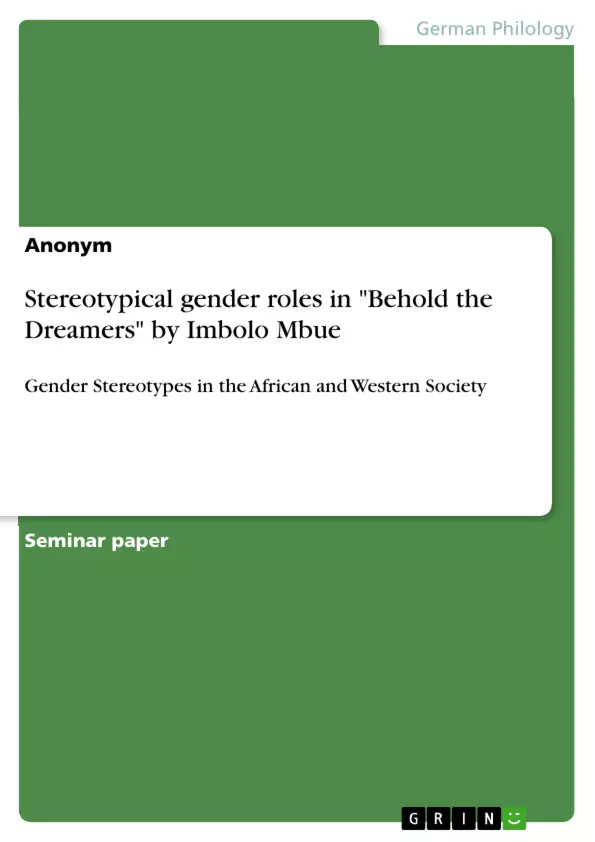In this paper, the concept of stereotypes is explained first before going more into detail on African men’s and women’s identity and gender roles as well as the western view on this topic. In the second part of the paper, gender stereotypes in African and Western societies in the novel "Behold the Dreamers" are analyzed.
One of the most prevalent forms of stereotype is gender stereotyping. Gender stereotypes differ in all parts of the world. Thus, gender stereotypes in a Western setting differs widely from that in an African setting, where women are seen as homemakers and responsible for household chores and men are seen as the head of the family, providing for them. These stereotypes can be clearly seen in the novel, "Behold the Dreamers" by Imbolo Mbue, which distinguishes between these two settings by representing the African culture in the Western setting and by drawing a clear contrast between these cultures to reinforce, as well as debunk developed stereotypes.
Table of Contents
- Introduction
- The Concept and Science of Stereotyping
- Stereotypical gender roles and Identity
- Stereotypical African men roles and identity
- Stereotypical African Women Roles and Identity
- Western Worldview of Gender Roles and Identity
- Summary of Imbolo Mbue's Behold the Dreamers
- How Behold the Dreamers Portrays Gender Stereotypes in both the African and Western Society
Objectives and Key Themes
This paper aims to explore the concept of stereotypes and analyze how they are portrayed in Imbolo Mbue's novel, Behold the Dreamers. It examines the specific lens of gender stereotypes in both African and Western societies, focusing on the roles and identities of men and women in each context.
- The concept and science of stereotyping, encompassing various approaches and perspectives.
- The impact of stereotypes on societal structures and individual identities.
- The influence of Western media and narratives on shaping perceptions of African culture and identity.
- The portrayal of gender roles and identities in Behold the Dreamers, highlighting contrasting cultural perspectives.
- The intersection of gender and cultural stereotypes in shaping individual experiences.
Chapter Summaries
The introduction provides a definition of stereotypes and explores their prevalence in various contexts. The chapter then focuses on gender stereotyping, particularly the differing perspectives between Western and African cultures. The second chapter delves into the science of stereotyping, examining three distinct approaches: economic, sociological, and social cognition.
The following chapters address the specific roles and identities of African men and women within a stereotypical framework. The analysis highlights the impact of societal expectations and the influence of Western narratives on shaping these perceptions. The chapter on Western perspectives on gender roles and identity provides a contrasting viewpoint.
The final chapter, focusing on the novel Behold the Dreamers, delves into how the narrative portrays gender stereotypes in both the African and Western contexts, offering a comparative analysis of the two settings.
Keywords
The paper centers around the concept of stereotypes, specifically addressing gender stereotyping in both African and Western societies. Key themes include cultural perspectives on gender roles, identity construction, the influence of media narratives, and the portrayal of these themes in contemporary literature, particularly in the context of Imbolo Mbue's Behold the Dreamers.
- Quote paper
- Anonym (Author), 2021, Stereotypical gender roles in "Behold the Dreamers" by Imbolo Mbue, Munich, GRIN Verlag, https://www.grin.com/document/1377724



